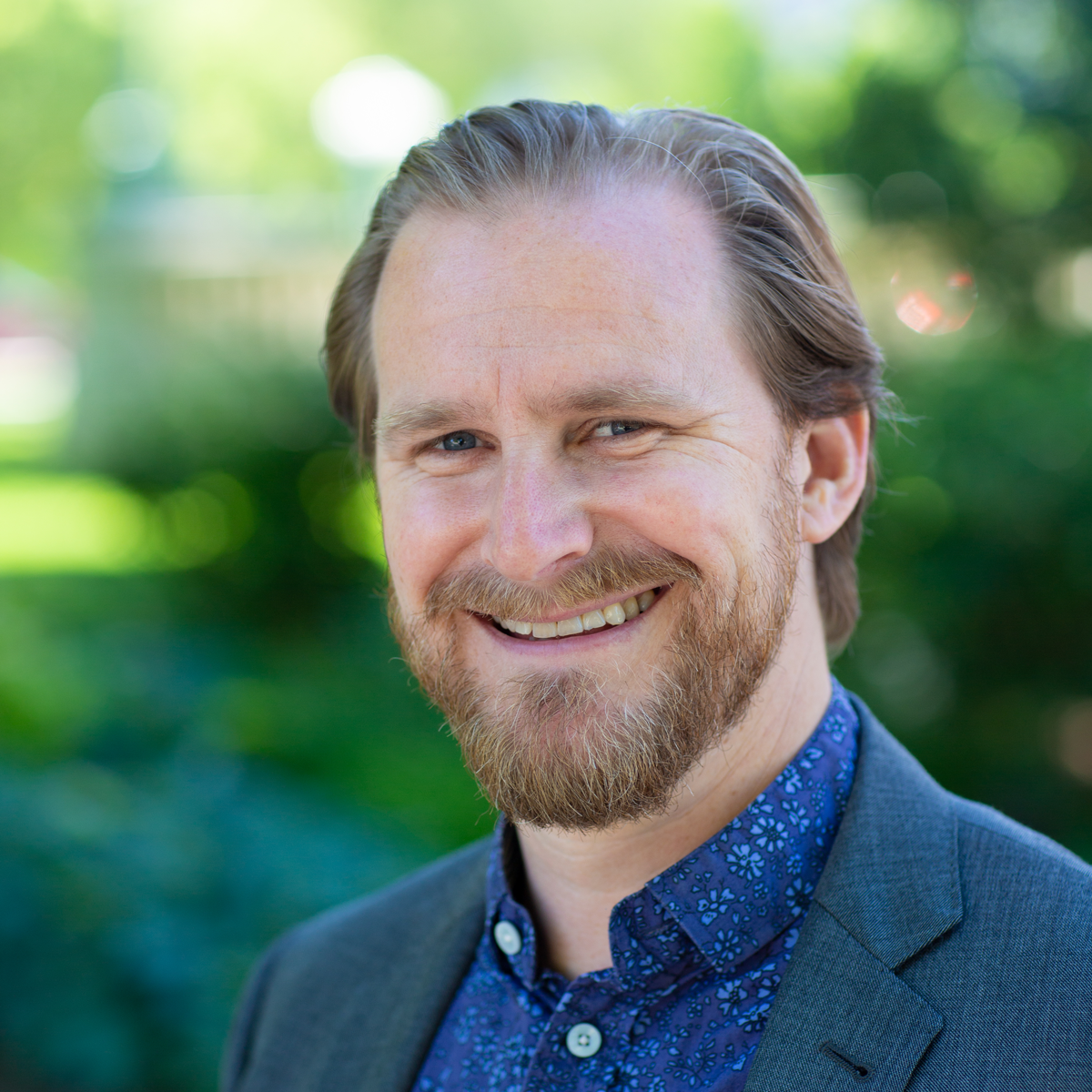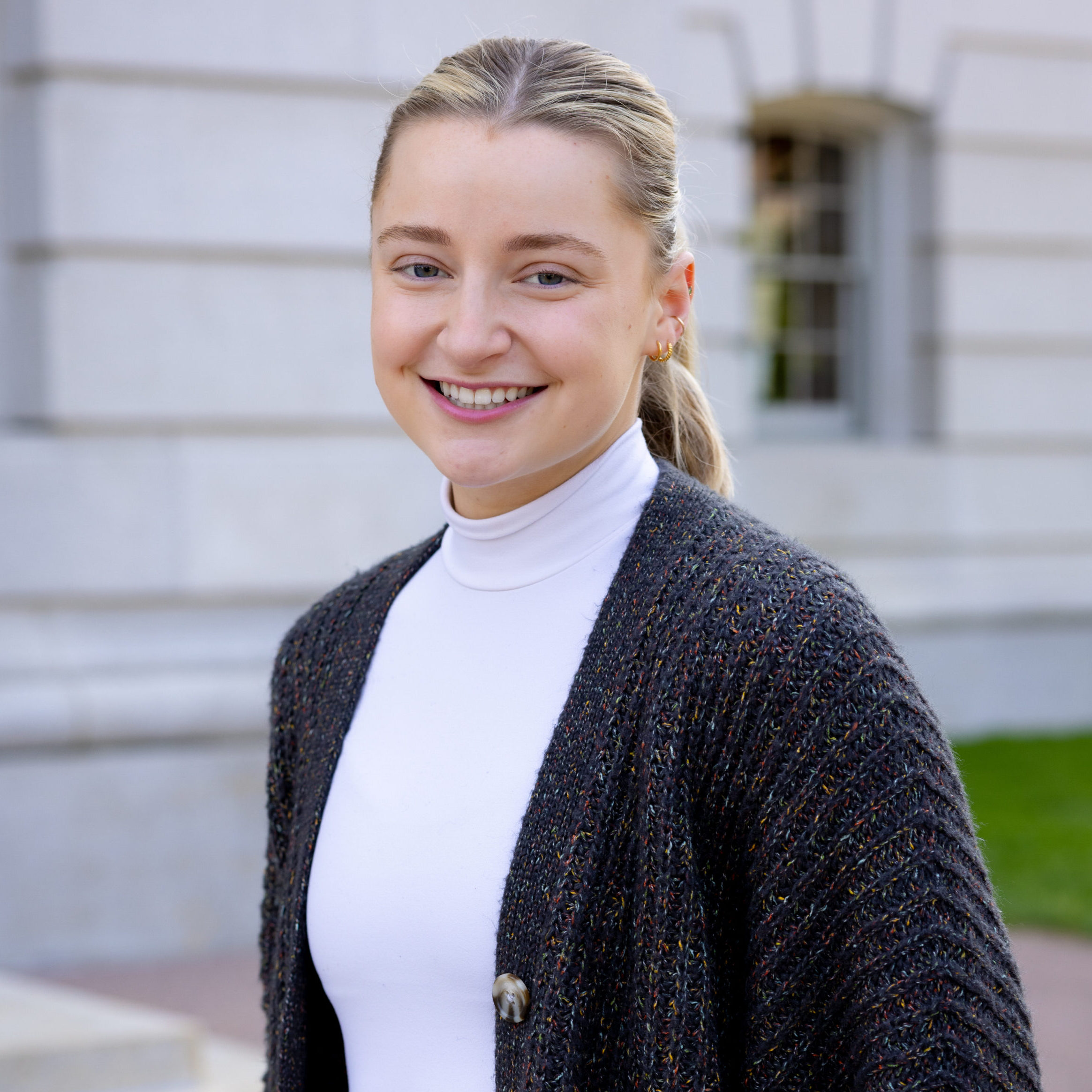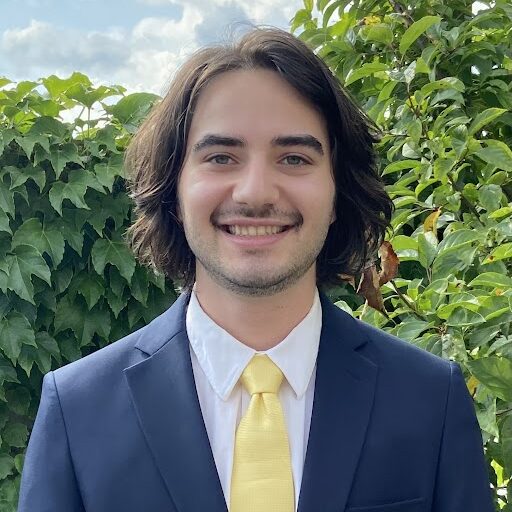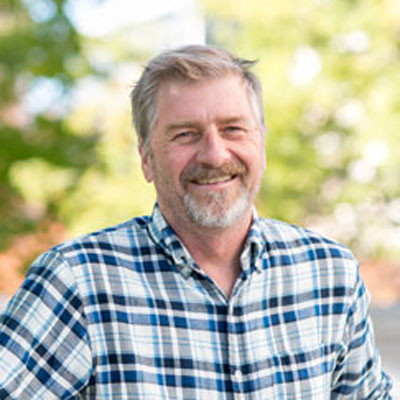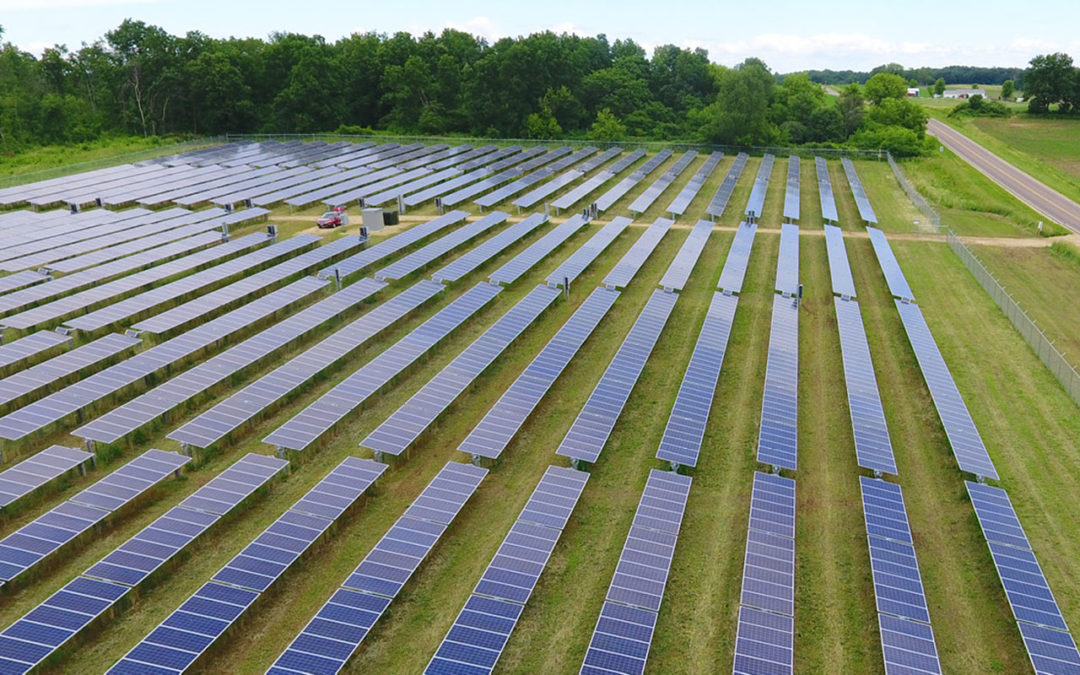
by Alex Beld | May 27, 2025 | Renewables, Solar, Utility Scale, Wind
A recently published report by the Center for Energy & Environmental Analysis, “Drill More, Pay More – America’s New Energy Paradigm,” indicates the U.S. is facing a unique energy situation characterized by both rising domestic energy prices and increased energy production. Wholesale natural gas prices in the U.S. have increased 93 percent in the first quarter of 2025, compared to the same period last year, despite record-high natural gas production.
At the same time, we have reports on clean energy that show us (Achieving 100% Clean Energy in Wisconsin Report and the companion report The Economic Impacts of Decarbonization in Wisconsin), we don’t just know that Wisconsin can achieve 100% carbon-free electricity by 2050 — we know how to do it. All while maintaining reliability and affordability for consumers. These reports emphasize that most of the projected energy demand through 2050 can be met with the development of more renewables, enhanced energy efficiency, and more flexible energy load management solutions.
We’re now past the point of advocating for clean energy solely because it’s better for the planet. As our energy needs grow, driven by electrification and data demand, it’s critical to invest in solutions that can be brought online quickly and affordably. Methane gas can no longer guarantee the consistent, low prices it once did. In contrast, renewable energy projects like solar and wind can typically be built in about two years, while gas plants often take twice as long to become operational. Supply chain issues and tariff uncertainties are increasing construction times and costs across all sectors, but renewable energy projects can still be constructed more quickly while avoiding the fuel price volatility associated with fossil fuels. With timelines and costs both working against gas, it’s simply not smart business to keep investing in slower, more expensive options when faster, more reliable solutions are within reach.
Utilities across the country continue to tell regulatory bodies and the general public that we can only meet the rising energy demands caused by new data centers with methane gas plants. However, national case studies from companies like Meta and Microsoft have demonstrated that clean energy solutions can meet data center needs when paired with smart load shifting and grid integration. Microsoft, for example, is piloting hydrogen fuel cells as an alternative to fossil fuel backup, while Meta has partnered with the Tennessee Valley Authority to run its Tennessee data center on 800 MW of solar power. These examples show us that there are multiple ways for us to power the digital economy, notably, without fossil fuels.
Even with clean energy opportunities before us, and financial and supply chain barriers to building new methane gas plants, we continue to see utilities propose new natural gas-powered electricity generation. An energy source, which according to analysis by the U.S. Department of Energy, is likely to have three cumulative impacts on consumers: higher natural gas bills, higher electricity bills, and even a higher cost of goods from U.S. manufacturers.
By supporting clean energy solutions, energy efficiency measures, and creative management of our grid, we can reliably support the around-the-clock energy needs of data centers and the needs of everyday Wisconsinites. To ignore these solutions is to ignore good business sense. It is time to recognize that clean energy isn’t an alternative but a practical solution to our growing energy demand.
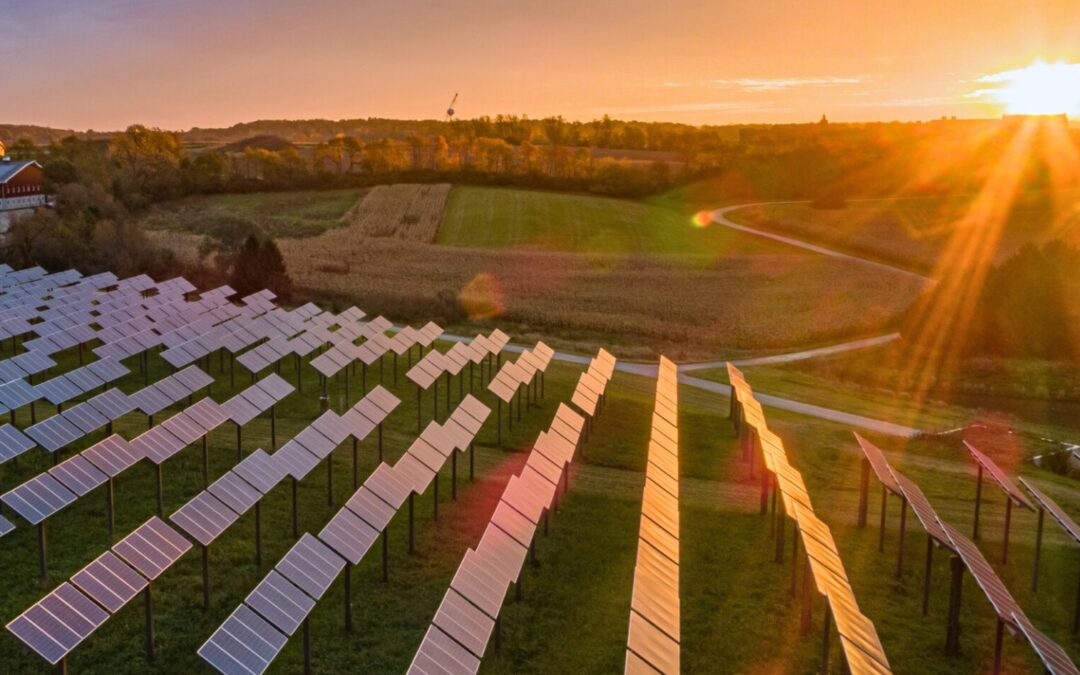
by Jodi Jean Amble | Apr 29, 2025 | Renewables, Solar, Utility Scale
As we work to decarbonize Wisconsin’s economy, the need for large-scale solar (LSS) development continues to grow. But solar panels alone won’t build our clean energy future. How developers and advocates plan, engage, and invest in communities can determine whether a project is a symbol of prosperity or a source of resistance. The process makes all the difference.
Several Wisconsin organizations are working directly with communities to shape how clean energy projects are planned and built. RENEW Wisconsin and Clean Wisconsin support large-scale solar developments by highlighting the benefits they bring to local economies and landowners. Wisconsin Land and Water supports county conservation staff and local officials by providing guidance on land use and policy considerations related to energy siting. UW-Madison Extension educates and engages communities through RESET (Renewable Energy Siting & Engagement for Tomorrow), a program that helps communities prepare and plan for large-scale renewables.
A 2023 research article titled “Good fences make good neighbors: Stakeholder perspectives on the local benefits and burdens of large-scale solar energy development in the United States,” explores how LSS solar projects are perceived and how to align solar development with local values. Through interviews with residents, developers, and public officials, the researchers found that community pushback is often less about solar and more about how projects are introduced and implemented.
I encourage you to read the full report. In the meantime, here are my four key takeaways from the study that offer guidance for better solar development:
- Start with Meaningful Engagement
Public meetings and legal notices aren’t enough. Communities want a seat at the table from day one. Study participants emphasized the need for early, consistent, in-person engagement throughout a project’s timeline, from planning to decommissioning.
Some of the best ideas include hosting solar bus tours, creating local advisory groups, holding job-training workshops, and sharing visuals of project designs. These efforts help demystify the process and show local residents that their input matters.
- Empower Local Liaisons
People trust people they know. Using local third-party intermediaries like community champions, nonprofits, or university partners can have a big impact on the success of a project. These liaisons can be the bridge between developers and residents, communicating in ways that resonate locally and holding all parties accountable.
Developers may know solar, but local partners know their communities. The best projects use these strengths to build trust and reduce tensions.
- Be Honest About Tradeoffs
No project is perfect, and developers must communicate tradeoffs transparently, whether it’s changes to the visual landscape, land-use concerns, or vegetation preferences. Residents should be invited to learn from neighboring communities to discuss the long-term impacts of land use. Developers and advocates should also be forthcoming about other aspects of the project, including the visibility of substations and transmission lines, as well as any local resources that may be impacted during construction.
Transparency and clarity can go a long way in building trust, dispelling rumors and misinformation, and improving overall community sentiment about a solar project.
- Demonstrate and Deliver Real Community Benefits
Residents want to see that these solar projects will improve their quality of life. Developers and advocates should highlight local benefits, including access to good-paying jobs, fair land lease payments, or energy savings for nearby households.
The study found that some developers overlook the input of project neighbors. In addition, the profits from land leases sometimes go to absentee owners or corporations. Officials and communities are calling for stronger community benefits agreements that ensure the value of clean energy stays local and lasts long after the developers have left town.
We Can Develop Solar That Works for Everyone
This study is a reminder that solar success isn’t just about megawatts. It’s about relationships and transparency. In many ways, the responsibility of this community engagement work begins with developers. Fortunately, RENEW has several developer members who lead by example, showing how authentic community engagement can lead to better outcomes. Wisconsin’s most successful LSS projects demonstrate that if we want clean energy to power a better future, we need to build projects with communities, not just in them.
Let’s continue to engage in policies and practices that make solar smarter, more inclusive, and grounded in local Wisconsin values.
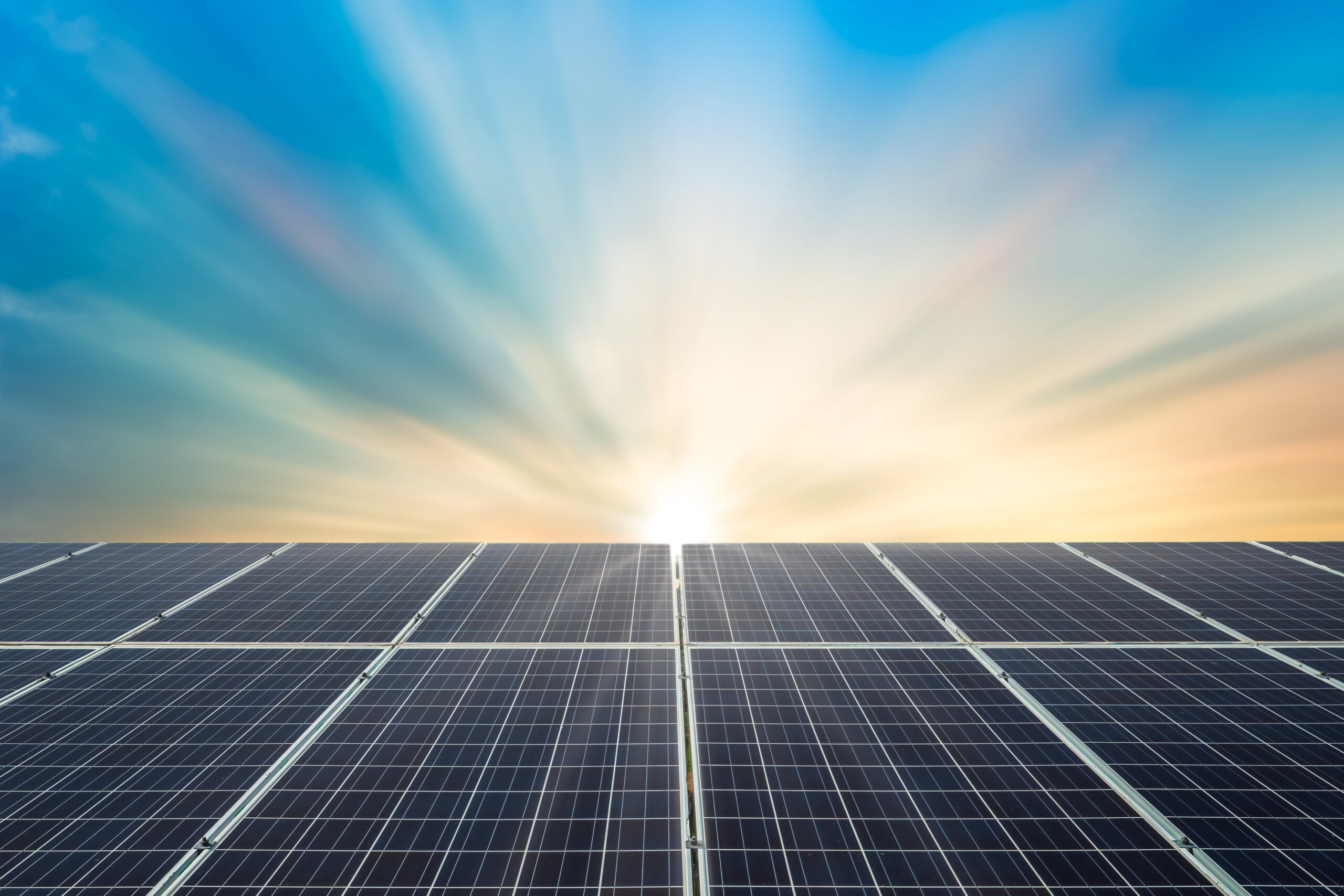
by Alex Beld | Sep 15, 2023 | Advocacy, Public Service Commission, Solar, Utility Scale
The Elk Creek Solar project, located in the Township of Spring Brook in Dunn County, was approved this month by the Public Service Commission of Wisconsin (PSCW). The 300-megawatt (MW) solar project is paired with a 76.6 MW battery energy storage system and is expected to go online by the spring of 2026.
As designed, Elk Creek Solar would supply homegrown, affordable, emission-free electricity to power the equivalent of approximately 60,000 homes for at least 30 years. RENEW Wisconsin submitted testimony in support of the project, and we are excited for construction to begin.
The developer of the project, TED Renewables, has been engaged and transparent with the Springbrook community throughout the approval process by providing detailed information on the benefits and timeline of the project. Beyond generating revenue for local schools and government services, the project is expected to create upwards of 650 jobs during the construction phase and 3-4 highly skilled long-term jobs.
According to TED Renewables, the annual tax revenues for all taxing districts will exceed $1.2 million. As stated in the La Crosse Tribune, “Spring Brook township of $500,000, Dunn County of $700,000 and the Elk Mound Area School District of $60,000.”
Construction is projected to start in the fall of 2024. Throughout the life of the project, the landowner will retain the title to the land and sign a 30-year lease, with the option for a five-year extension. At the end of its operational life, the equipment will be recycled or reused, and the land will be restored. By giving the soil time to rest and planting deep-rooted plants, the quality of the soil will be improved substantially by the time it is once again ready for agricultural use.
Elk Creek Solar is the 17th project larger than 100 MW the PSCW has approved since 2019, totaling 3,249 MW for Wisconsin. Several other projects, including Silver Maple Solar, are awaiting approval.
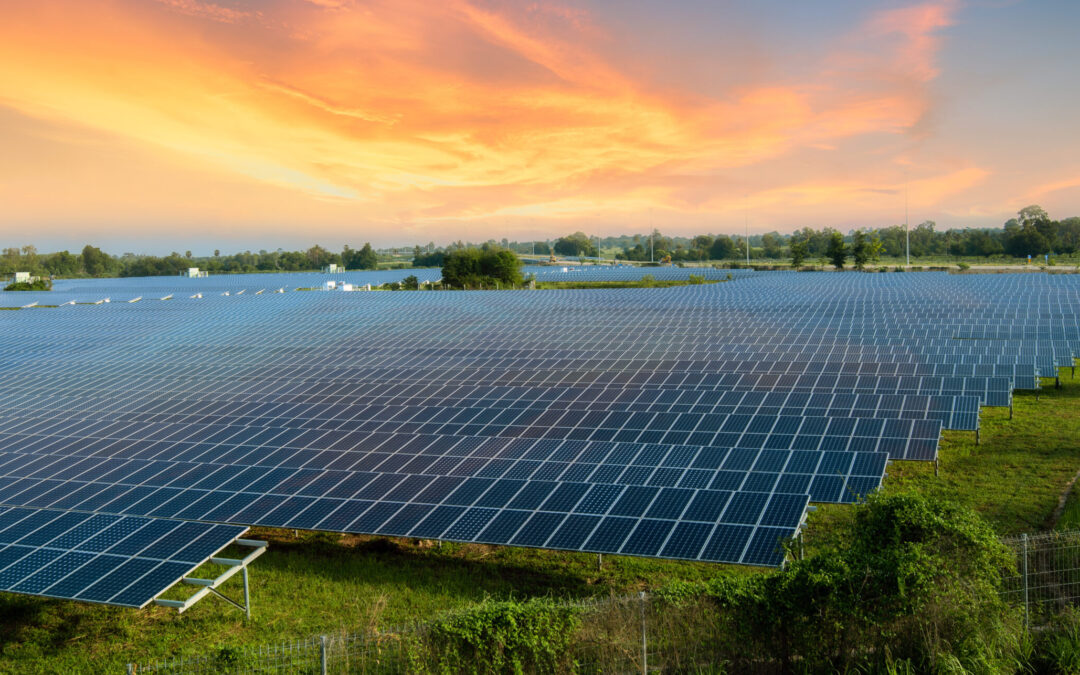
by Michael Vickerman | Jun 29, 2023 | Solar, Utilities, Utility Scale
Wisconsin electric providers added significantly more renewable energy content to their electricity supplies in 2022, according to a June 2023 report issued by the Public Service Commission. Overall, renewable energy accounted for 16.2% of Wisconsin electricity sales in 2022, increasing more than two percentage points from the 13.8% level recorded in 2021.
Renewable energy performance varied widely among individual electric providers. At the high end, Northern States Power-Wisconsin (Xcel-NSPW) reported that 44.5% of the electricity it sold in 2022 came from renewable energy sources (see Table 1). Though making up only 10% of Wisconsin electricity sales, Xcel-NSPW accounts for nearly 27% of the state’s total renewable electricity supply. Most of the utility’s added renewable energy supplies came from wind power projects in Minnesota and the Dakotas.
Wisconsin Power and Light (Alliant-WPL) also posted healthy gains in 2022, rising from 20.2% in 2021 to 24% last year. Indeed, of the 11.3 million megawatt-hours (MWh) of renewable energy sold in Wisconsin in 2022, about one-half of that total (5.7 million MWh) flowed through either Xcel-NSPW or Alliant-WPL to their customers.
Under the state’s Renewable Portfolio Standard (RPS), electric providers must track their renewable energy sales from the previous year and provide those results to the Public Service Commission. The 2022 results are retrievable from the Commission staff memo issued in Docket 5-RF-2022, specifically Appendices D and E of PSC REF#: 470111. These annual reports also compile renewable electricity provided through utility renewable energy tariffs, such as community solar offerings.
The PSC’s RPS reports break down aggregate renewable power totals by resource and state of origin. Imports from other states accounted for nearly two-thirds of total renewable electricity sales (64% vs. 36%). In 2022, wind projects generated 74% of the renewable electricity sold in Wisconsin, followed by hydro (14%), solar (7%), and biomass (4%). Moving in with greater granularity, wind power originating from out-of-state sources accounted for 59% of total renewable energy sales, followed by in-state wind (15%), in-state hydro (10%, and in-state solar (6%).
The percentage of out-of-state wind generation relative to total renewable electricity sales has increased dramatically since 2017, rising from 48% to 59%.
Tracking individual utility performance
In the wake of utility commitments to substantially reduce carbon emissions by 2030 and reach net zero emissions by 2050, these compliance reports take on added importance in tracking electricity provider progress in meeting their goals. Table 1 below shows that while some utilities, such as Xcel-NSPW and Alliant-WPL, have responded quickly to the challenge, others, such as We Energies, have made little headway. As documented by these annual reports, the volume of renewable MWh sold to We Energies customers has declined since 2017.
Bear in mind that We Energies, the state’s largest electric utility, accounts for about one-third of total electric sales in Wisconsin (23.5 million MWh out of 69.9 million MWh). Of that total, only 1.46 million MWh, or 6.2%, were generated from renewable resources. While We Energies derives a significant portion of its electricity supply from the Point Beach Nuclear power plant (8.7 million MWh in 2022), it will be no small undertaking to acquire solar capacity quickly enough to overcome the lackluster results of recent years.
We Energies owns approximately 30 MW of the 1,000 MW of solar generating capacity presently operating in Wisconsin. Though its first two major solar investments—Badger Hollow 2 (50 MW) and Paris (150 MW)—are expected to commence operations in the fourth quarter of this year, their output won’t deliver a noticeable boost to We Energies’ renewable energy content until 2024, which will be reflected in the Commission’s 2025 RPS report. We Energies’ share of Badger Hollow 2 and Paris should generate 400,000 MWh/year, equivalent to 1.7% of We Energies’ 2022 sales.
We Energies will need to greatly accelerate the pace of their generation transition to become 20% renewably powered by 2030, effectively tripling the 1.46 million MWh recorded in 2022.
In contrast, 69% of the electricity supplies serving Xcel Energy’s Upper Midwest territory came from carbon-free sources in 2022, according to its corporate sustainability report. (Note: the 69% number includes output from Xcel Energy’s two nuclear power units in Minnesota). By 2030, the percentage of carbon-free generation is expected to rise to 81%. The report also states that, by 2029, coal generation will no longer supply Xcel’s Upper Midwest territory, including NSPW.
This spring, Xcel-NSPW committed to purchasing the output from the Apple River solar farm in Polk County, adding 100 MW of solar power and 100 MW of storage capacity to its generation portfolio. Developed by National Grid Renewables, Apple River should be online sometime in 2025.
And by July 2024, Alliant-WPL will have completed and placed in service close to 1,100 MW of solar generating capacity in Wisconsin, which will account for 20% of that utility’s sales in the Badger State.
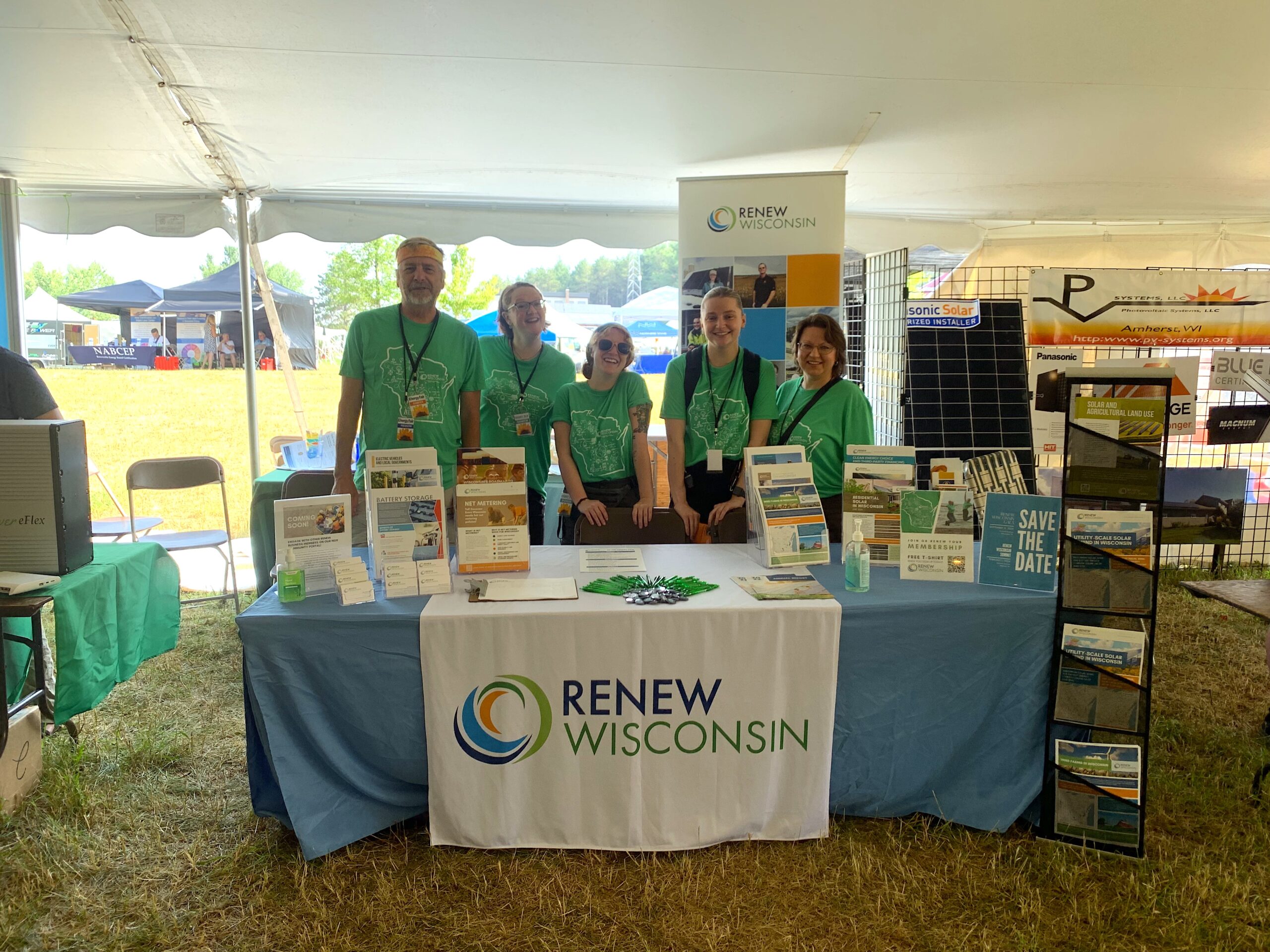
by Julia Holzschuh | Jun 27, 2023 | Electric Vehicles, Electrification, Energy Storage, Events, Inflation Reduction Act, Local Government, Netzero Wisconsin, Policy, Programs, RENEW Wisconsin, Renewables, Solar, Solar for Good, Sustainability, Utility Scale
Last weekend, the Midwest Renewable Energy Association (MREA) hosted the 32nd Annual Energy Fair, bringing people together to learn about sustainability and clean energy, connect with others, and take action toward a sustainable future. The Fair featured workshops, exhibitors, live music, inspiring keynote speakers, family fun, great local food, and more.
RENEW staff presented some compelling workshops and you can download slides from their presentations below.
Zero Carbon by 2050—A Path for Wisconsin
Andrew Kell, RENEW Policy Director, discussed zero-carbon goals and ongoing planning efforts in Wisconsin. Andrew also was a guest on a live podcast, focused on Wisconsin’s Net Zero future.
MadiSUN Workforce Training
Lauren Cohen, RENEW Program Coordinator, held a workshop regarding career growth opportunities within Wisconsin’s clean energy industry, focusing primarily on opportunities within the solar industry.
Vehicle-to-Grid: Opportunities and Challenges
Francisco Sayu, RENEW Emerging Technology Director, discussed how Vehicle-to-Grid technology unlocks the energy stored in electric vehicles and opens opportunities for energy trading, energy management, and grid resiliency.
Farming Sunshine: Solar and Ag Land Use
Nolan Stumpf, one of RENEW’s Interns, presented a session regarding solar farms and the opportunities and challenges of using the land for farming purposes and advancing clean energy.
Can Clean Energy Overcome Local Opposition?
Michael Vickerman, RENEW Clean Energy Deployment Manager, discussed the opposition clean energy faces at the local level and how to overcome those barriers.
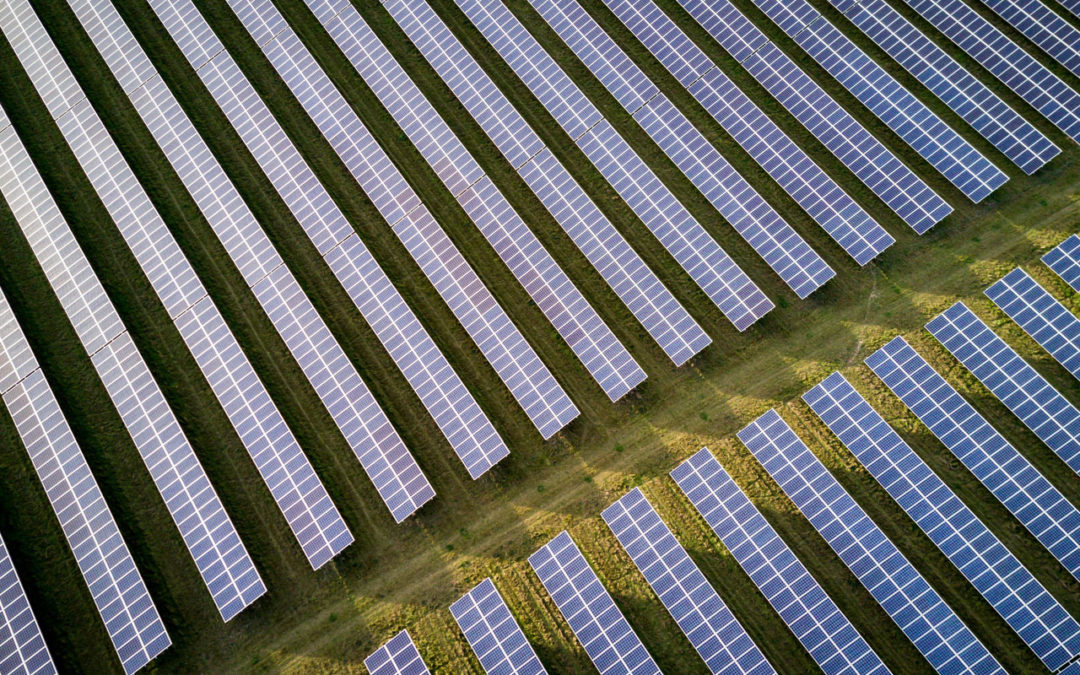
by Michael Vickerman | Apr 6, 2023 | Action Alert, Advocacy, Public Service Commission, Solar, Utility Scale
Langdon Mills Solar is a 200-megawatt solar project with a 50 MW battery energy storage system proposed for development in the Towns of Courtland and Springvale in Columbia County, Wisconsin. As designed, Langdon Mills Solar would generate homegrown, affordable, emission-free electricity sufficient to power the equivalent of approximately 30,000 homes. If approved, construction on Langdon Mills will begin in 2024 and is anticipated to be operational in 2026. For more information, visit the application here. If you want to learn more about how Langdon Mills Solar has engaged with the community, check out their website here. RENEW Wisconsin submitted testimony in support of Langdon Mills Solar in Docket 9818-CE-100, which you can access here.
Solar projects larger than 100 megawatts must gain approval from the Public Service Commission of Wisconsin (PSCW) before they can proceed to construction. Along the way, there are opportunities for public comment at the township, county, and state levels.
Please help us demonstrate Wisconsin’s enthusiastic support for solar power and this project by submitting a comment supporting Langdon Mills Solar. Be sure to specifically reference the project and the benefits that it can bring to Wisconsin. The deadline for submitting comments is May 23, 2023.






